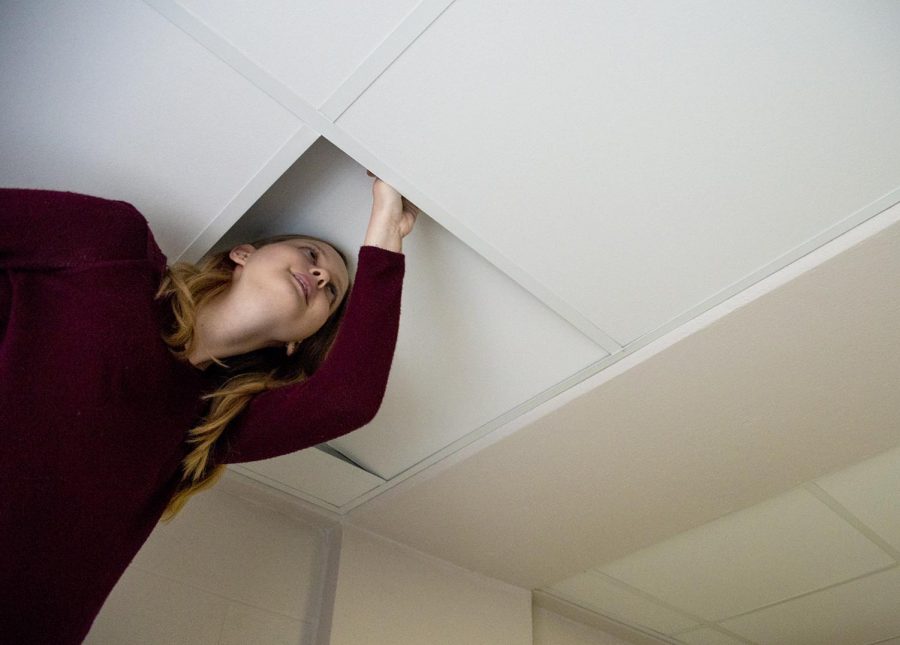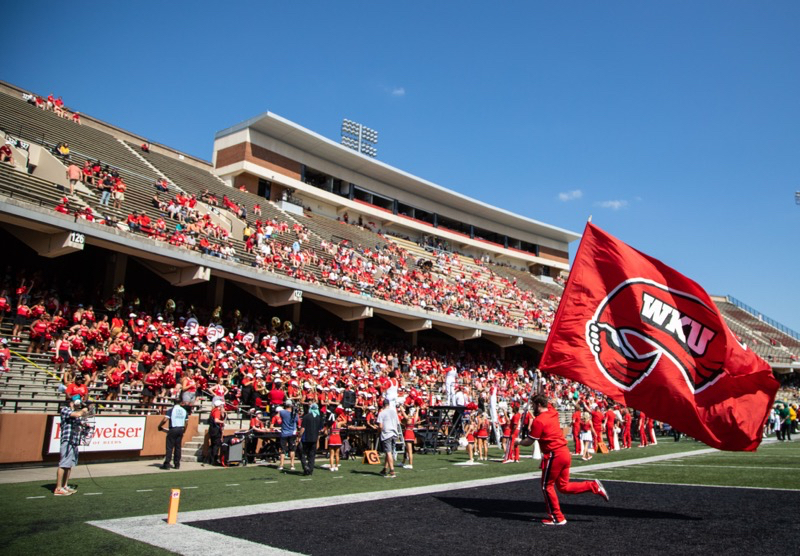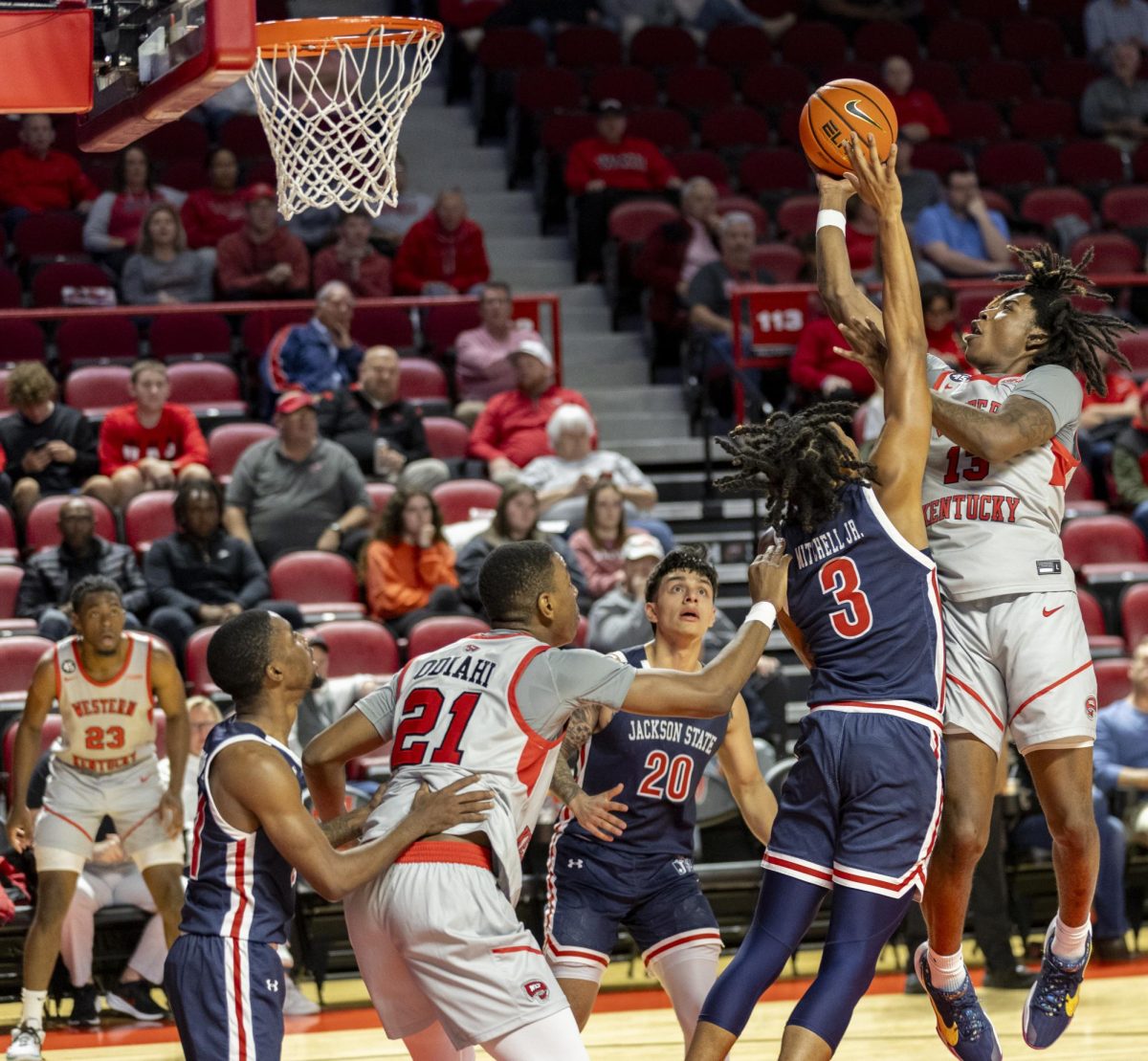WKU responds to mold reports, costs for Minton closure exceed $600,000
November 14, 2018
WKU provided further details concerning the relocation of all Minton Hall residents, including the total cost for the removal of mold in the dorm.
Following the relocation of all Minton residents, Housing and Residence Life is expected to pay over $634,000 as of Tuesday, Nov. 13, in spending and credit obligations, WKU media relations director Bob Skipper said.
In an email to Minton residents last week, the university said it would offer $1,000 in credit for Spring 2019 housing fees to the 348 students who had to move out of the dorm over the weekend. Additionally, all resident assistants, community assistants and senior administrative resident assistants who were assigned roommates as a result of the move out were offered $250 in credit.
In an email, Skipper said this was the first time that residents of an entire hall have been relocated mid-semester.
Through an analysis of all maintenance requests on the InSite database, the Herald found 524 reports of mold between Nov. 17, 2017 and Nov. 12, 2018.
“Every year the university receives work orders related to indoor air quality concerns, from excessive humidity and moisture to reports of mold and those are addressed,” Skipper said. “This fall, as the number of requests increased, we began a more extensive examination into the issue, and began a systematic plan to address each hall. The university considers all mold reports as serious.”
As of 4 p.m. Monday, Nov. 12, Skipper said there were 71 mold related work orders open and being addressed. He explained once a call or maintenance request involving mold is received, a work order is started with a specific project code for mold.
The work order is then forwarded to Environmental, Health and Safety who reviews the request and determines if and what sample testing is needed. From there EH&S informs the appropriate maintenance manager who determines the next action to fix the situation and identifies a probable cause to prevent recurrences.
A work order is marked as “completed” after the scope has been completed, and marked as “closed” once it has been financially closed out.
After the recent cases of mold, Skipper said there have not been changes to the standard procedure with requests regarding mold, but the process has been accelerated.
In the analysis, the Herald noticed 45 requests were closed or completed on Sept. 13, 2018. A number of those 45 requests were issued as far back as 2017. Skipper said a delivery of HRL work order documents were received and the Department of Facilities Management (DFM) staff entered them into the digital system on Sept. 13. He said the digital system shows the entry date as the “completed” date.
InSite, the Maintenance Connections system, was implemented in 2014 and is used by HRL and the Department of Facilities Management. The DFM receives all requests, and once completed, the paperwork is returned to them and can be closed out in the system. Requests for Education and General facilities are assigned by zones and tracked digitally while requests for HRL are printed and picked up daily by staff for assignment.
Skipper said the E&G work order system switched to digital around 2014 for “general cost savings and improved Work Order management practices.” Over six months ago, HRL began reviewing its processes and decided they needed to increase efficiency and accountability of maintenance requests.
HRL’s work order system is partially digital while it’s still fully transitioning, and beginning next week, Skipper said DFM will have full management of HRL’s maintenance system.
When asked why the number of pages of maintenance requests on the InSite database fluctuated between 2,752 and 2,731, Skipper said new work orders are “opened and closed continuously.” The Herald found a significant amount of requests marked as closed during the analysis.
Despite the difficulties and frustrations with the resident relocation, Skipper said he does not believe university retention or recruitment will be impacted by the Minton incident and cited nearby universities who face similar issues.
“We have met this challenge head on and been aggressive about resolving these issues since the beginning,” he said. “Our guiding principle has always been ensuring the health and safety of each of our residents, and we believe that’s what current and future students would want,” Skipper said. “The way the University community pulled together over the weekend to help Minton residents move is just one example of how we care for and value our students.”
News Editor Rebekah Alvey can be reached at 270-745-6011 and [email protected].
Editor-in-Chief Evan Heichelbech can be reached at 270-745-6011 and [email protected].











